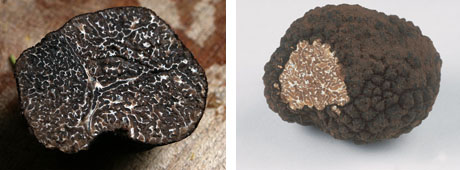Truffles, I once read, used to be abundant and cheap enough to appear on almost every page in a cookbook intended for the lower and middle classes. In nineteenth-century France, truffles were regarded as an everyday food, rather than an elusive, expensive, and unquestionably elite treat.
However, the trenches, tanks, and shrapnel of World War I didn’t just wipe out an entire generation; they also redesigned the landscape of northern France. Formerly verdant arable land, studded with clumps of truffle-hosting beech, hazel, and oak trees, was replaced with a muddy moonscape. Thus deprived of its habitat, the truffle harvest shrank to a tiny fraction of its former size, and its value rose accordingly.

IMAGE: After the battle of Passchendaele.
While trying – unsuccessfully – to find the original source for this story, I realised that the abundant truffles in question would most likely have been the grey Tuber Uncinatum, or Burgundy truffle, whose ecological range includes northern France, rather than the more highly prized black Périgord variety, Tuber melanosporum, which prefers a Mediterranean climate. (The latter has seen its harvest size shrink dramatically too, but for different reasons.)
Nonetheless, the fact remains: truffles are a casualty of war.

IMAGE: (L) Tuber melanosporum; (R) Tuber Uncinatum (via Wikimedia).
Since landscape redesign is a constant military preoccupation, from Roman generals salting the fields of Carthage to U.S. soldiers spraying Agent Orange over Vietnam, one wonders how many foods have been removed from the menu by war? Entire flavour experiences, culinary traditions, and ways of life: the unremarked, monument-less victims of agro-ecological combat.

